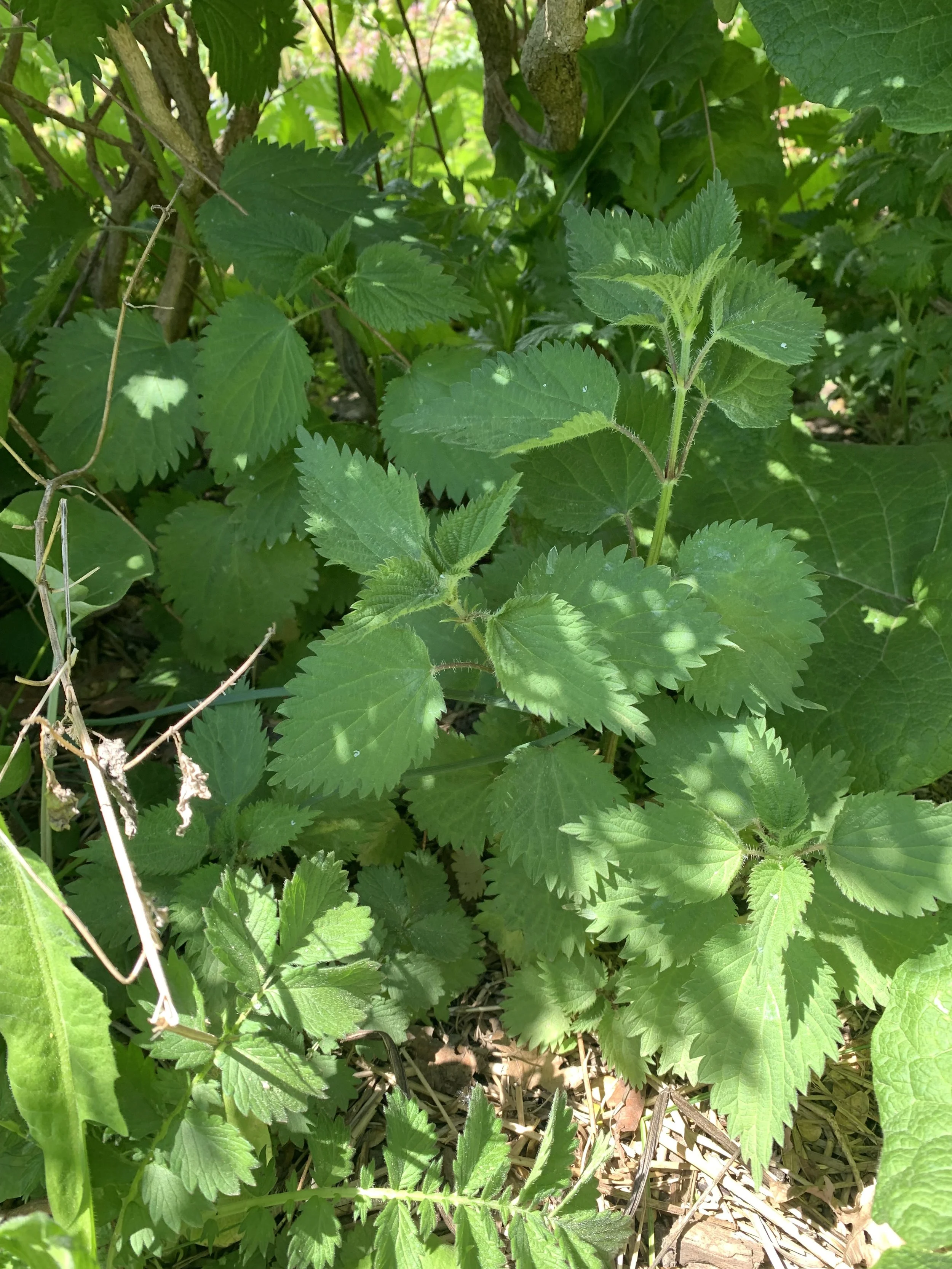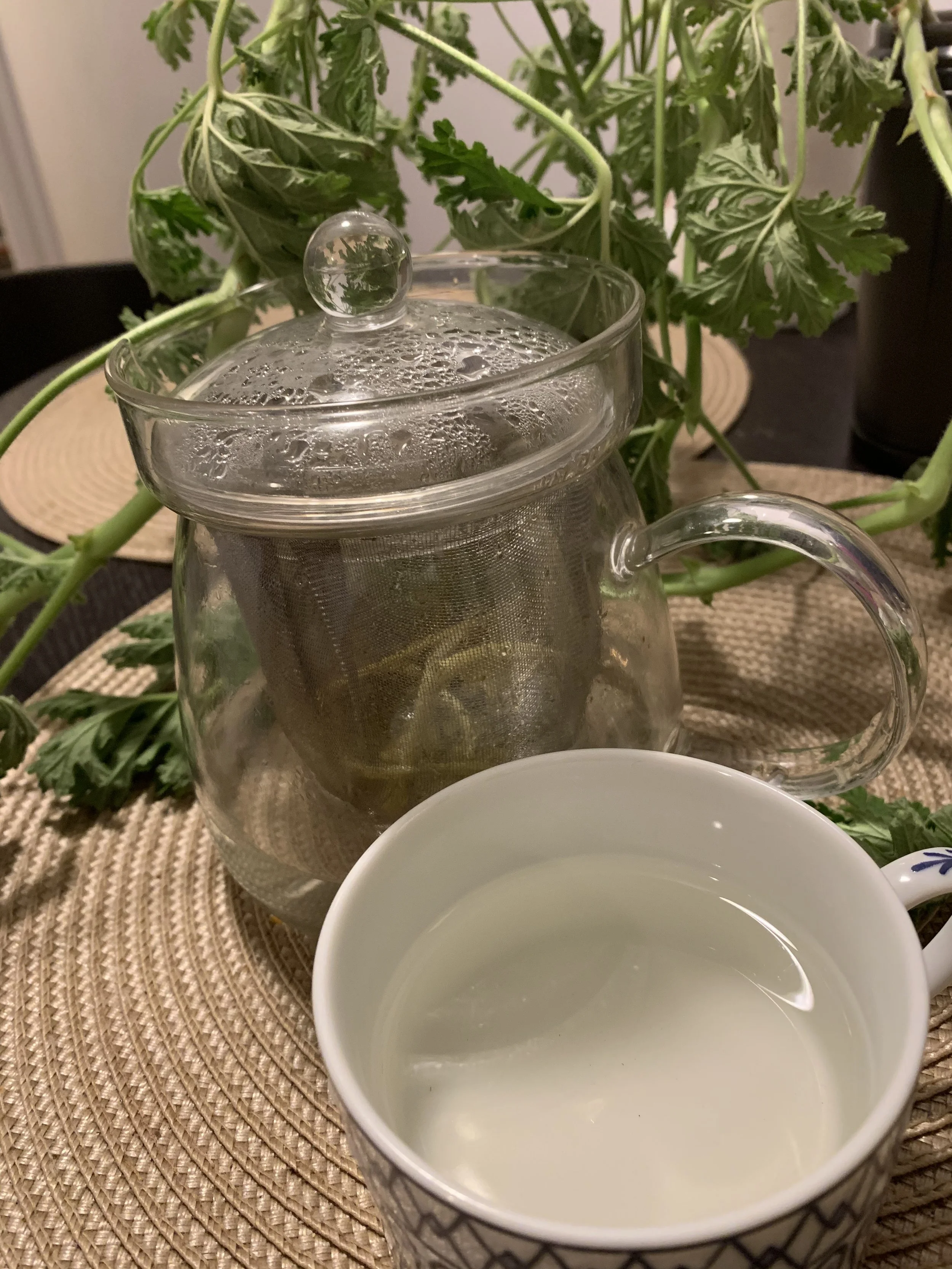🌿 Why I Started Making Tea Slowly — For Life Transitions & Nervous System Support
At a time when my body felt like a stranger and my power was slipping away, I returned to something simple: tea. This story weaves through ancestral healing, herbal wisdom, and the ritual of remembering who we are.
I started making tea slowly at a pivotal point in my life.
It was a threshold moment—one of those times between what was and what’s next.
Maybe you’ve been there: after a breakup, in a career shift, navigating grief, becoming a parent, or shedding an old version of yourself.
These transitional spaces—the in-between places—can feel disorienting. But they can also be sacred.
For me, fatigue, brain fog, irritability, and sleeplessness weren’t just symptoms—they were signals.
I wasn’t dying, I was changing. But there was no map for this kind of transformation.
So I began searching.
✨ A Returning
A friend at a training handed me a bundle of motherwort to support my nervous system, and that opened the door.
I found the work of Susun Weed and her apprentices from the ’70s.
I discovered María Benedetti, a half-Puerto Rican herbalist preserving the plant medicine traditions of Puerto Rico. I almost apprenticed with her—until a hurricane interrupted those plans.
Still, the seeds were planted.
I remembered my abuela sending me down rainforest roads with little herbal packages for blood pressure and wellness.
My father told me my grandfather did the same—mixing herbs for neighbors.
Later, I met a cousin through ancestry.com who told me our family was known for healing across Puerto Rico. He traced us back to Guayama, a town known as the City of the Witches.
It was a remembering.
Eventually, I began an herbal apprenticeship with Alex of Mindful Wilderness and Vulgaris Herbs.
We were a circle of five women, gathering from spring to winter.
We foraged, blended, and supported one another in ways that can’t be fully captured in words.
What stayed with me most?
Nourishing herbal infusions.
They didn’t just support my body.
They restored rhythm, helped me listen, and gave me a way to reconnect with the quiet wisdom I carry.
Nourishing herbal infusions.
These infusions didn’t just help my hormones—they supported my nervous system, my sense of rhythm, my reconnection to body-based wisdom.
I wasn’t managing symptoms—I was nourishing my entire being.
🌿 The Five Nourishing Herbal Infusions I Turn to Again and Again
Oatstraw
Supports the nervous system, calms stress, and soothes frazzled edges. It’s the herb I reach for when I’m overworked, under-rested, or disconnected.Linden Flower
A heart-centered plant that soothes grief, tension, and heat. It’s a cooling, comforting ally for times of overwhelm or emotional tightness.Red Clover
Known for its gentle hormone-balancing properties, red clover is rich in phytoestrogens and can support perimenopausal and menopausal transitions.Stinging Nettle
A mineral-rich powerhouse. Nettle supports kidney function, stabilizes blood sugar, and deeply nourishes the blood. Strong, earthy, and revitalizing.Comfrey
A deeply healing and controversial herb—known for its tissue repair properties. Do your research, but I honor her for joint aches, muscle support, and resilience.
🌱 Note: These are whole dried herbs, not powders or tea bags.
You’ll want to source from reputable herbal suppliers. (I don’t share affiliate links for internal herbal ingestion due to ethical and regulatory reasons—but I’m happy to recommend sources off-site.)
🫖 How to Make a Nourishing Herbal Infusion
Before we get into the how-to, here are a few of the supportive tools I personally use in my own practice:
Quart-Size Mason Jars – I prefer using wide-mouth glass jars for easy steeping and straining. These Ball Mason Jars are my go-to. (affiliate link)
Funnel – This stainless steel wide-mouth funnel helps prevent spills and makes pouring infusions easy. (affiliate link)
Mesh Strainer – I use this Cuisinart Fine Mesh Strainer Set to filter herbs after steeping. (affiliate link)
Instructions:
1 oz of dried herb (about 1 cup by volume)
1 quart of boiling waterPlace the herb in a large mason jar or teapot. Pour the boiling water over. Cover and let steep for 4–8 hours or overnight.
Strain and drink throughout the day.✨ Bonus tip: Nettle can be a strong taste to adjust to—feel free to add a pinch of peppermint to ease into it.
🌸 A Ritual for All Seasons
Whether you’re in a hormonal shift, a spiritual one, or simply looking for softer rhythms in a hard world—this practice can hold you.
Slowing down became my resistance. Tea became my ritual.These rituals aren’t just about wellness—they’re about remembrance.
Of who we are. Of where we come from.
Of the wise women who came before us and the ones we’re becoming.If this spoke to you, consider downloading the 10-Minute Ritual Reset Guide and begin crafting space for softness and sovereignty in your everyday life.
With warmth,
Catherine Dawn
Birthing Dawn


